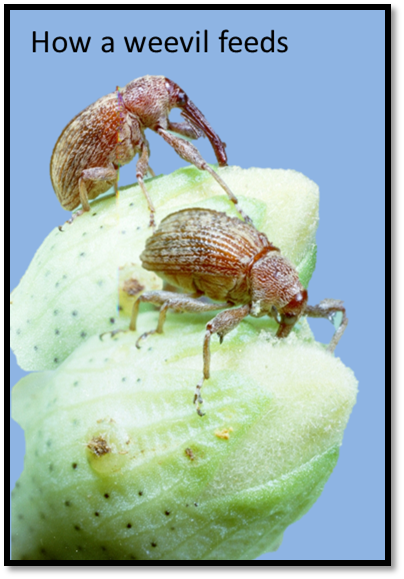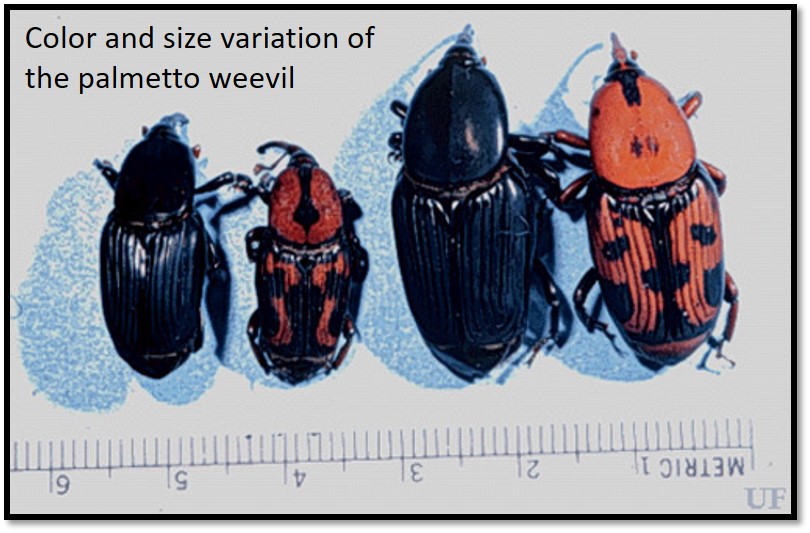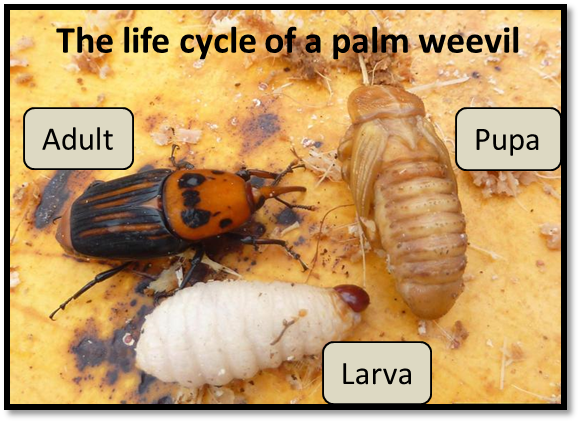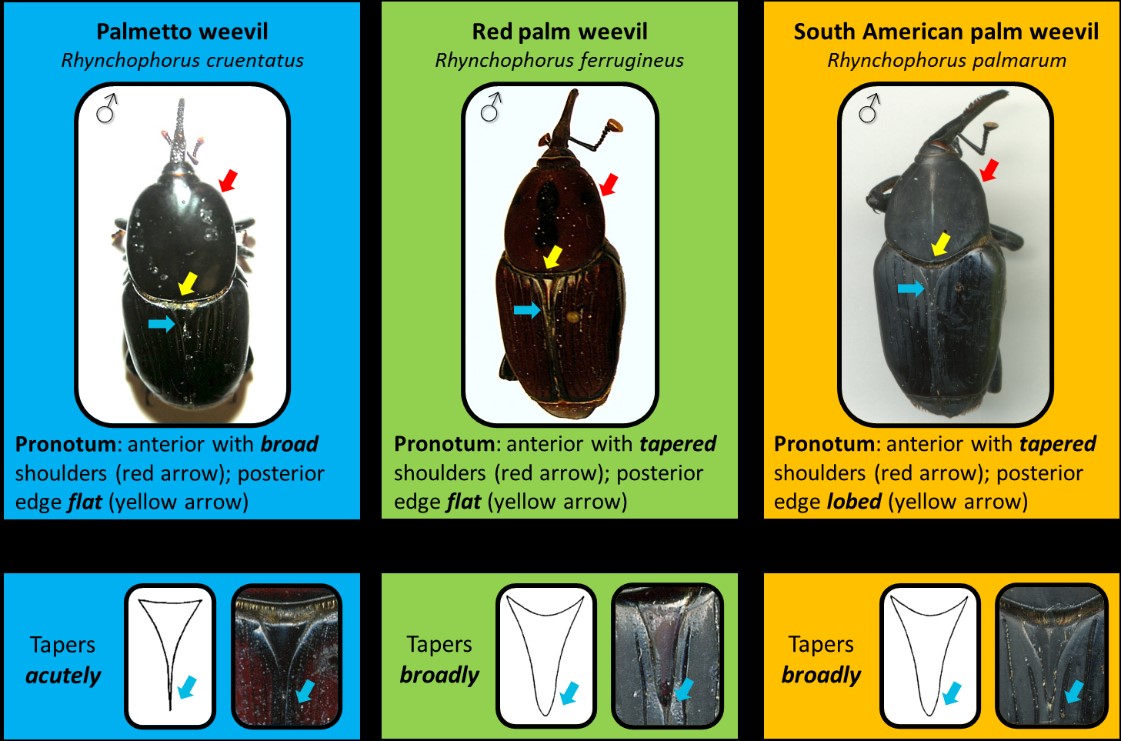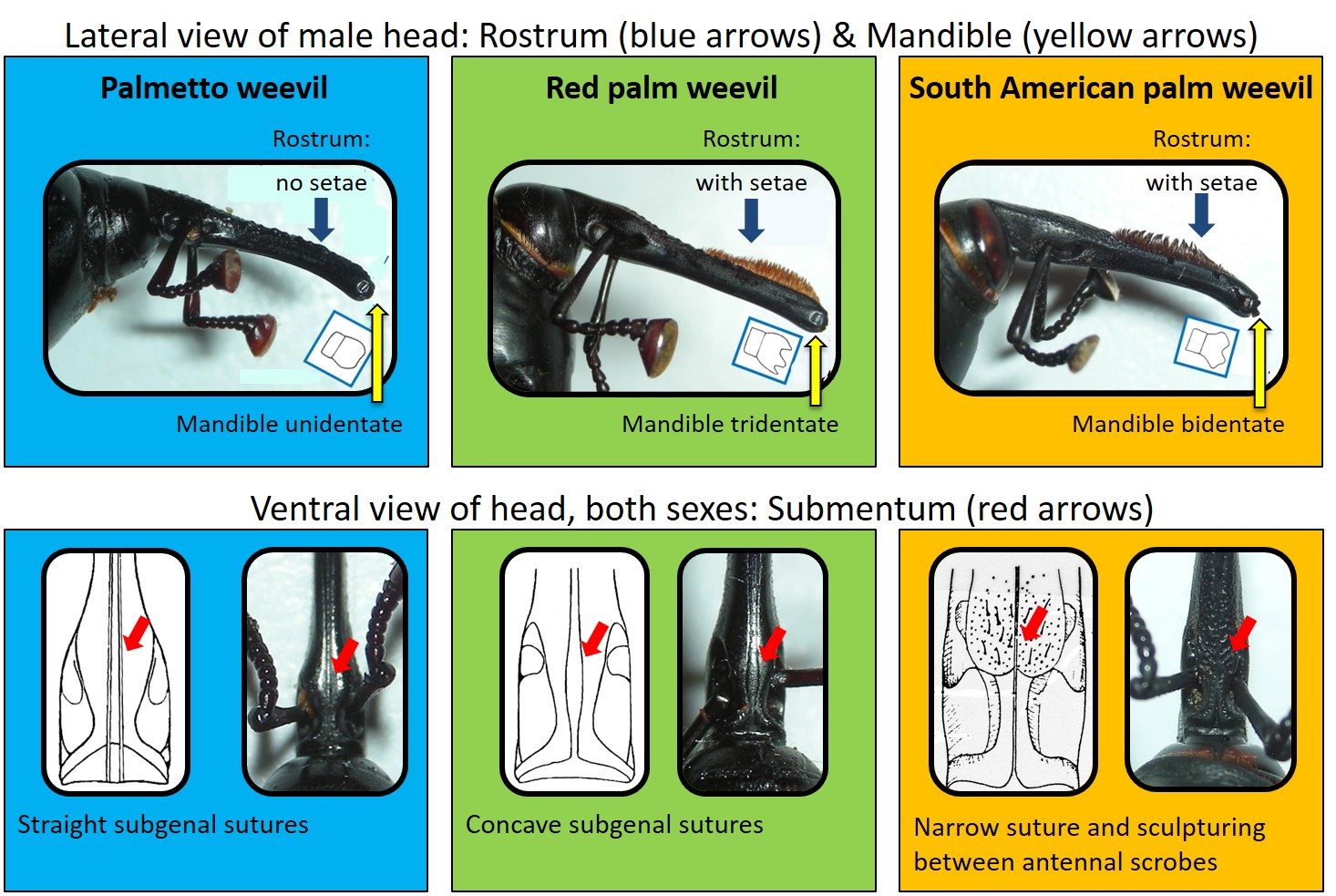Before we can answer the question of an evil palm weevil, we first need to know what a weevil is. A weevil is a family of beetles that are usually identified by the mouthpart — a long snout – used to chew through a plant and feed. Florida is home to many different weevils, but few can be mistaken as the giant palmetto weevil, Rhynchophorus cruentatus.
The palmetto weevil is not a pest to native palms (cabbage and saw palms) due to their selection of severely wounded and dying trees. However, this insect can be a pest to introduced palms that are now common in Florida landscapes such as the Canary Island date palm, bismarck palm, royal palms, and coconut palms. Introduced palms are most susceptible to the weevil when they are first transplanted and stressed whereas healthy palms are much less likely to be attacked.
How can you spot an infestation?
A beetle goes through four life stages – egg, larva, pupa, and adult. The larva feed internally on the palm and are the only stage to cause major damage. Due to the large white grubs feeding completely inside the tree, you’re only likely to see the symptoms of the grubs and possibly spot an adult of the palmetto weevil. Initial signs of damage are drooping older leaves that quickly collapse due to internal feeding. Eventually, the grubs will eat a large amount of the tree causing it to collapse completely, aptly named “popped neck” damage.
If you find one of these adults, you should take a closer look! The US Department of Agriculture is on the lookout for two invasive palms weevils that look very similar to our native palmetto weevil species, R. cruentatus. The photos below are a quick reference of the physical differences between the native and potentially invasive species. Click on the photos to enlarge them.
To find out more please see the Florida First Detector scripted presentation on palm weevils, or look at the Featured Creatures on the giant palmetto weevil from the University of Florida. Please visit the USDA Pest Alert and contact the USDA if you find a suspected invasive palm weevil at 888-397-1517.
Photo Credit:
- How a weevil feeds: Clemson University – USDA Cooperative Extension Slide Series, bugwood.org #UGA1236132 and #UGA1236130
- Color and size variation of palm weevils, popped neck damage, and identification charts of palm weevil: Robin M. Giblin-Davis, University of Florida
- Lifecycle of a palm weevil: Christina Hoddle, University of California – Riverside, Bugwood.org #5430200
Selected References:
- Molet, T., A. L. Roda, and L. D. Jackson. 2011. CPHST Pest Datasheet for Rhynchophorus ferrugineus. USDA-APHIS-PPQ-CPHST. Revised March 2014.
- Molet, T. A. L. Roda, L. D. Jackson, and B. Salas. 2011. CPHST Pest Datasheet for Rhynchophorus palmarum. USDA-APHIS-PPQ-CPHST.
- Poplin, A., M.S., Roda, A., Ph.D., Bhotika, S., Ph.D., Sobel, L., B.S., 2014. Palm Weevils, May 2014.
- Weissling, T.J. and R.M. Giblin-Davis. 1997. Featured Creatures Rhynchophorus cruentatus Fabricius (Insecta: Coleoptera: Curculionidae). University of Florida. EDIS EENY-13. Revised January 2015.
 1
1
